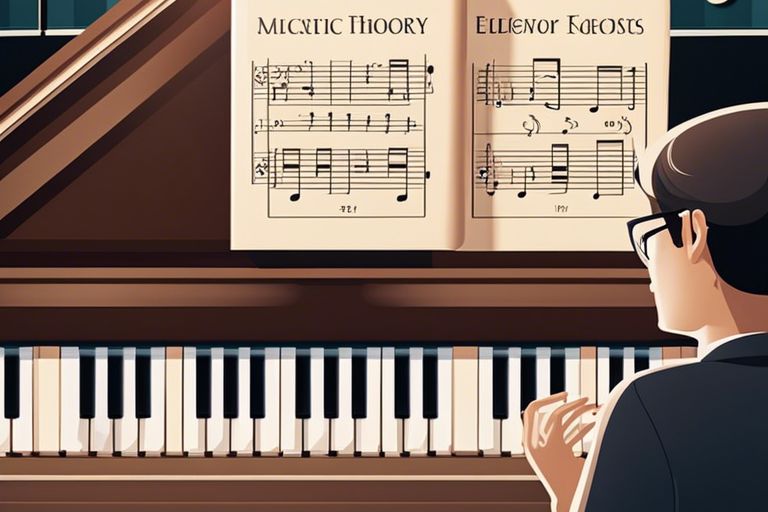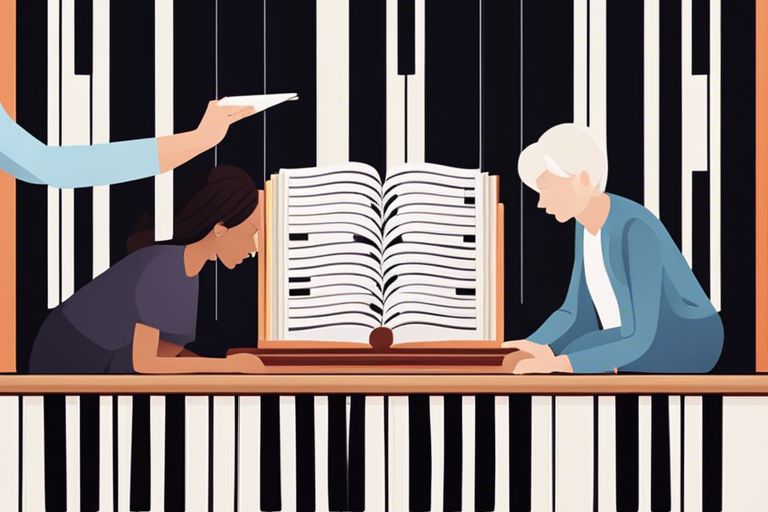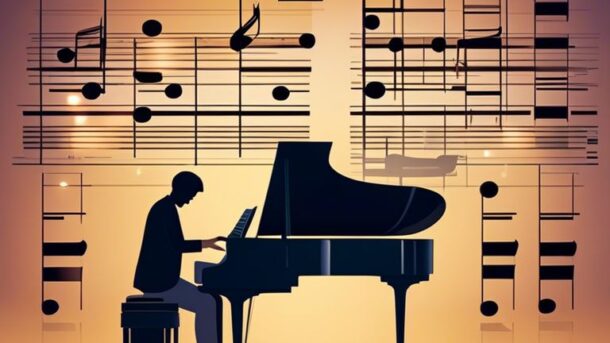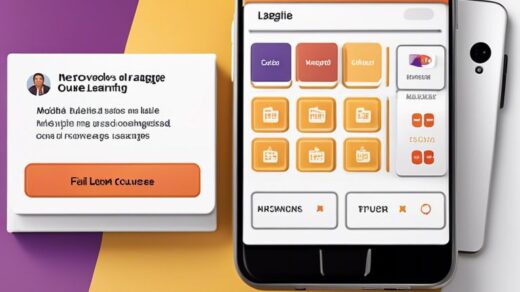Skills in playing the piano require a delicate balance of learning theory and gaining practical experience. To become a proficient pianist, it is imperative to not only understand the musical concepts and technical aspects but also to apply them in your playing. This blog post will guide you on how to effectively balance learning music theory with developing your practical skills during piano lessons, allowing you to progress and excel in your musical journey.
Key Takeaways:
- Understanding the balance: It is important to recognize the importance of both learning theory and practical skills in piano lessons. Theory provides the foundation for understanding how music works, while practical skills help students apply this knowledge to playing the piano.
- Integrating theory and practice: Find ways to integrate theory and practice during piano lessons to enhance the learning experience. For example, incorporate music theory concepts into practical exercises and pieces, and discuss the theory behind different techniques and musical elements while teaching practical skills.
- Customizing the approach: Recognize that every student is different and may require a different balance of theory and practical skills in their piano lessons. Tailor your teaching approach to meet the individual needs and learning style of each student to help them achieve a well-rounded understanding of music and piano playing.

Setting Goals and Expectations
The ability to balance learning theory and practical skills in piano lessons relies heavily on setting clear goals and expectations. By establishing these parameters, you can effectively tailor your teaching approach to meet the needs of each individual student.
Identifying the Student’s Learning Style
One important aspect of setting goals and expectations is identifying your student’s learning style. Some students may excel in understanding music theory first before entering into practical skills, while others may prefer a hands-on approach from the start. By recognizing how your student learns best, you can structure your lessons to cater to their unique style, ensuring a more effective and engaging learning experience.
Establishing Realistic Practice Schedules
Schedules play a crucial role in achieving a balance between theory and practical skills. When setting practice schedules, it’s important to be realistic and considerate of the student’s time and commitments. Encourage your student to practice regularly but also allow flexibility to prevent burnout. It’s better to have shorter, focused practice sessions than long, tedious ones. By incorporating theory and practical exercises into these schedules, you create a well-rounded approach to learning the piano.
Expectations should be clearly outlined from the start to help the student understand the level of commitment required and the progress they can expect to achieve. As a teacher, it’s important to communicate these expectations clearly and provide support to help your student reach their goals. By setting realistic expectations, you can create a positive learning environment that motivates the student to grow and improve their piano skills.
Finding the Right Balance
Little by little, you will find the perfect equilibrium between learning theory and practical skills in your piano lessons. While theory provides the foundation for understanding music, practical skills allow you to bring that knowledge to life through your fingertips on the keys. It’s important to strike a balance between the two to ensure steady progress and a well-rounded musical education. If you ever feel overwhelmed or unsure of how to strike this balance, don’t hesitate to seek guidance or advice from resources like Best way to learn piano for basic skills? [closed].
Allocating Time for Theory and Practical Skills
Allocating time for theory and practical skills in your piano practice is crucial. Consider dividing your practice session into segments dedicated to each aspect. For example, you could spend the first 15 minutes on theory, studying concepts like scales, chords, and music theory principles. Then, transition into the practical application by practicing pieces that incorporate the theory you just learned. By alternating between theory and practice, you reinforce your understanding while honing your playing skills.
Integrating Theory into Practical Exercises
Integrating theory into your practical exercises is a powerful way to deepen your musical understanding. As you practice pieces, pay attention to the theoretical concepts at play. For instance, analyze the harmonic progressions, identify key signatures, and understand the rhythmic patterns within the music. By connecting theory to practice, you not only enhance your performance but also develop a deeper appreciation for the music you are playing.
Skills: By integrating theory into your practical exercises, you transform your piano playing from a mechanical task into a thoughtful and expressive art form. Understanding the theory behind the music enriches your interpretation, allowing you to infuse each note with intention and emotion. Embrace this holistic approach to learning, and watch as your musicality blossoms with each practice session.

Effective Teaching Strategies
Using Analogies to Explain Complex Concepts
Keep your piano lessons engaging and easily understandable by using analogies to explain complex music theory concepts. Analogies help you relate unfamiliar ideas to something more familiar, making it easier for your students to grasp abstract concepts. For example, you could compare scales to the colors of a rainbow, with each note representing a different hue. This visual and relatable comparison can aid in your students’ understanding and retention of music theory.
Breaking Down Complex Skills into Manageable Parts
Explain intricate piano techniques by breaking them down into manageable parts. When tackling a challenging piece, encourage your students to focus on one hand at a time or even practice specific measures before putting it all together. Breaking down complex skills into smaller components not only makes the learning process less overwhelming but also allows your students to master each part before moving on to the next. This systematic approach fosters a deeper understanding and proficiency in playing the piano.
Breaking down complex skills into manageable parts is akin to solving a puzzle. By dividing a complex piece into smaller sections, you can analyze and work on each part with precision and attention to detail. Just like assembling a puzzle by starting with the border pieces, mastering individual components of a piano piece will eventually lead to a seamless and polished performance when all parts come together.
Making Theory Relevant
Relating Music Theory to the Student’s Favorite Songs
To make music theory more engaging and practical for you, it’s important to relate it to something you are already passionate about. Start by analyzing the music theory concepts present in your favorite songs. By breaking down the chords, scales, and progressions used in these songs, you can see how theory directly applies to music you love. This hands-on approach not only reinforces your understanding of theory but also helps you connect it to real-life examples that resonate with you.
Exploring the Historical Context of Musical Pieces
When delving into the historical context of musical pieces, you gain a deeper appreciation for the music you are learning. Understanding the time period, cultural influences, and composer’s background can provide valuable insights into the nuances of the piece. By exploring the historical context, you can uncover hidden meanings, stylistic choices, and performance practices that enhance your interpretation and connection to the music.
Plus, learning about the historical context can inspire you to approach the piece with a newfound perspective, allowing you to embody the emotions and intentions behind the music more authentically. This holistic approach to learning not only enriches your musical knowledge but also brings a sense of depth and meaning to your performance.
Practical Applications
Many times, learning music theory can seem abstract and disconnected from actually playing the piano. However, understanding how music works can greatly enhance your practical skills, especially when it comes to improvisation and composition.
Applying Music Theory to Improvisation and Composition
Theory forms the foundation for improvisation and composition on the piano. By knowing the scales, chords, and harmonic progressions, you can confidently explore different melodies and create your compositions. Understanding music theory allows you to make informed decisions about which notes and chords to play, leading to more cohesive and engaging improvisations and compositions.
Using Technology to Enhance Practical Skills
Practicality is key when it comes to incorporating technology into your piano lessons. Utilizing apps, software, and online resources can help you improve your practical skills by providing instant feedback on your playing, offering interactive lessons, and allowing you to access a vast library of sheet music and exercises. Embracing technology in your piano practice can make learning more engaging and effective, ultimately enhancing your playing abilities.
Plus, using technology can also make practicing more convenient and flexible, allowing you to work on your skills anytime and anywhere. Whether you’re using apps to track your progress or software to simulate playing with a virtual orchestra, integrating technology into your piano lessons can further bridge the gap between theory and practical application, helping you become a well-rounded pianist.
Overcoming Common Challenges
Addressing Frustration and Motivation Issues
Challenges in learning the piano can sometimes lead to frustration and demotivation. When you encounter difficulties in mastering a new concept or piece, it’s important to remember that progress takes time and effort. To address these feelings, try breaking down tasks into smaller, more manageable components. Celebrate small victories along the way to keep your motivation high. Be mindful of, learning an instrument is a journey full of ups and downs, and it’s okay to feel frustrated at times.
Dealing with Learning Plateaus and Setbacks
Setbacks and learning plateaus are common in any learning process, including piano lessons. When you feel like you’re not progressing as quickly as you’d like, it’s vital to stay patient and persistent. Remember that improvement is not always linear, and everyone experiences setbacks from time to time. Use these moments as opportunities to revisit fundamentals, seek feedback from your teacher, or explore different practice techniques to overcome the plateau.
Understanding that setbacks are a natural part of the learning process can help you approach challenges with a growth mindset. Embrace the setbacks as opportunities for growth and learning rather than viewing them as failures. Be mindful of, every great pianist has faced setbacks along the way; it’s how you respond to them that will ultimately determine your success.
To wrap up
Now that you have explored the importance of balancing learning theory and practical skills in piano lessons, you are better equipped to approach your practice sessions with a well-rounded perspective. Remember that understanding the theory behind the music you are learning can greatly enhance your playing abilities and overall musicality. By incorporating both theory and practical skills into your lessons, you will develop a deeper understanding of the music and be able to express yourself more effectively through your playing.
Q: How do you balance learning theory and practical skills in piano lessons?
A: The key to balancing learning theory and practical skills in piano lessons is to integrate both aspects seamlessly. Start by dedicating a portion of each lesson to theory, focusing on music fundamentals such as note reading, rhythm, and basic music theory concepts. Then, apply these theories immediately to practical exercises and pieces. This hands-on approach helps students understand the relevance of theory to their playing and keeps them engaged and motivated.
Q: Why is it important to incorporate both theory and practical skills in piano lessons?
A: Learning theory and practical skills simultaneously in piano lessons is important for developing well-rounded musicianship. Theory provides the foundation for understanding how music works, while practical skills enable students to apply that knowledge in their playing. By combining theory and practical skills, students gain a comprehensive understanding of music, enhancing their ability to interpret, perform, and create music effectively.
Q: How can piano teachers effectively balance theory and practical skills in lessons?
A: Piano teachers can effectively balance theory and practical skills by creating a structured lesson plan that incorporates both aspects in a cohesive manner. Design lessons that integrate theory concepts with practical exercises, ensuring that students understand the relevance of theory to their playing. Encourage students to apply theoretical knowledge to their practice sessions and performances, reinforcing the connection between theory and practical skills. Additionally, provide opportunities for students to explore and experiment with different musical styles and genres to further develop their skills and knowledge.



